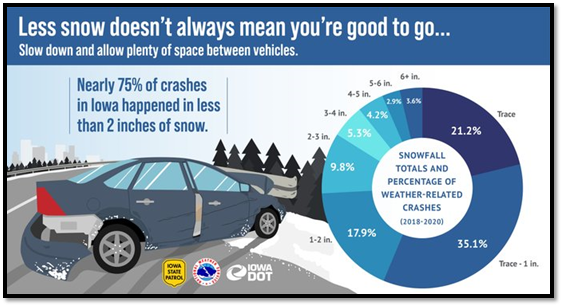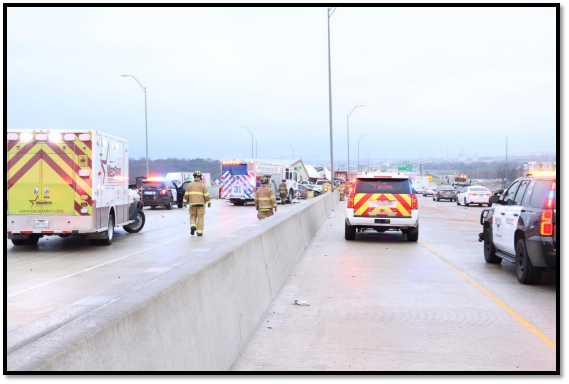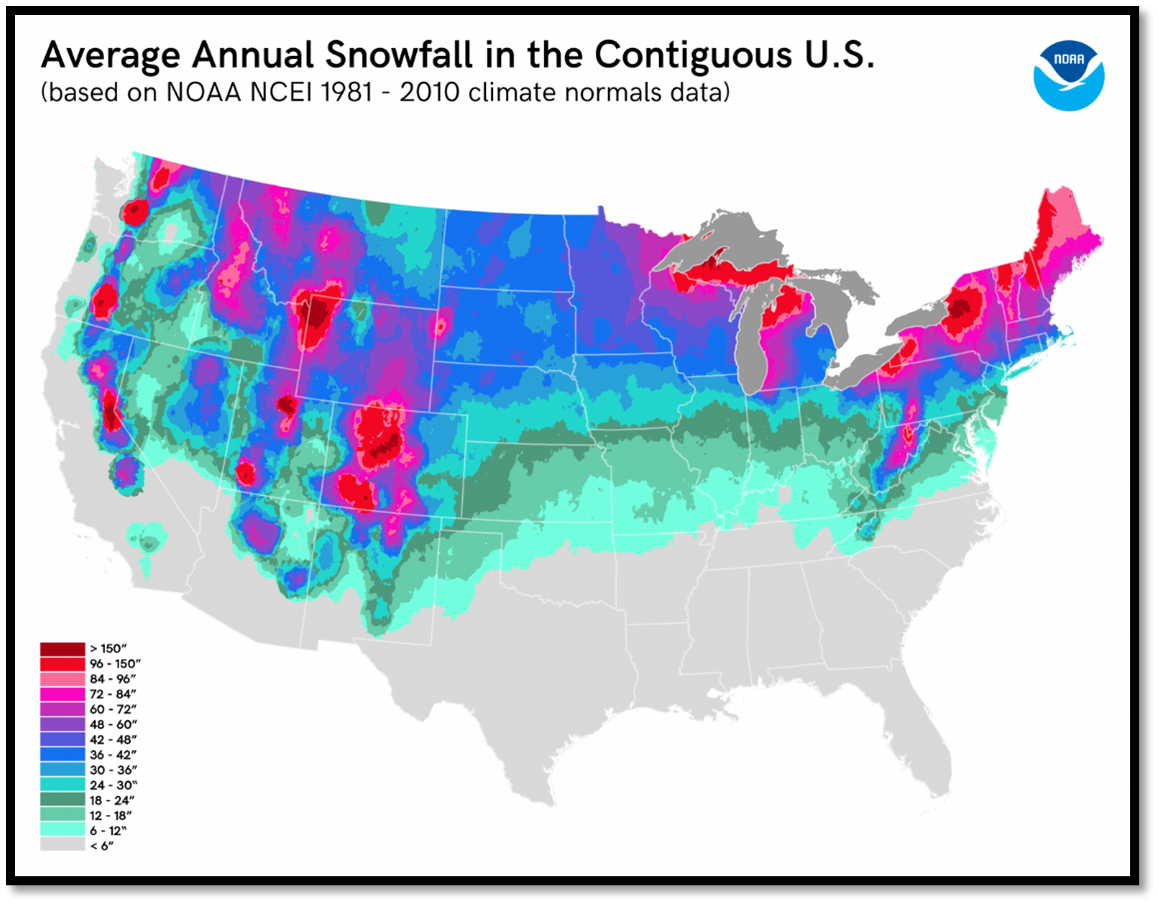[author: Kaj O'Mara]
Introduction: The Role of a Forensic Meteorologist
Winter is complicated whether we are judging the start or stop time of a winter event, the type of precipitation that has occurred, or the amount of accumulation. This article references numerous peer-reviewed studies regarding how winter precipitation greatly affects society through slip and fall accidents, traffic accidents, and aviation accidents. Despite the large impact, the shallow and light nature of some winter weather events means there is little in the way of automated, easily accessible data. This leaves a forensic meteorologist as a strong option to reconstruct these atmospheric conditions into a vertical profile of humidity, temperature, and wind data proximate to your property or incident location. If, for example, a case of freezing drizzle presented itself with limited radar data and no automated observations, a forensic meteorologist could create a vertical analysis of the atmosphere, determine the occurrence of drizzle and a possible start and end time.
The Financial Toll of Winter Weather in 2022
Winter weather poses a wide variety of threats to the public, and in 2022, it caused nearly $6 billion dollars in insured losses. [1] Whether it’s the harsh cold, vehicular accidents, or improper use of heaters, hundreds of people are killed or injured each year due to winter weather. [2] Detection of rain, ice, and snow has improved; however, even small amounts of ice or snow can prove costly. In Iowa for example, weather-related crash statistics between 2018-2020 show that around 56% of weather-related crashes occurred with an inch or less of snowfall. Of those, around 21% occurred with just a trace of snowfall. [3] This is not only true in the state of Iowa, but in cities like Madison and Milwaukee, Wisconsin as well. Most weather-related accidents during snow events in those communities occurred with only a trace—or up to two inches—of snowfall. [4]

FIGURE 1: WINTER-RELATED CRASH STATISTICS BETWEEN 2018 AND 2020 (SOURCE: IOWA DEPARTMENT OF TRANSPORTATION).
Freezing rain and freezing drizzle can be the most impactful of all winter weather phenomena, and only a small amount of icing is needed to create substantial danger. [5] These events often result in traffic accidents, personal injuries, power outages, and can even fully shut down a city. [6]
According to Landolt et al. (2020) [7] between 2000 and 2020, at least 28 aircraft accidents occurred in which freezing drizzle either played a role or was the direct cause.
Per the same study, from 2007 to 2016, over 500 people were killed and over 156,000 traffic accidents were reported in the United States due to freezing drizzle, freezing rain, or other contributing conditions, such as wet roads that later froze. These phenomena are known hazards to the transportation industry, and, unfortunately, automated observations of freezing drizzle are not always possible or available. These weather conditions continue to cause or contribute to human casualties and property damage, and these statistics and incidences continue to highlight the impact that winter precipitation has on society.

FIGURE 2: VIEW OF THE I-35W CRASH SCENE ON THE MORNING OF FEBRUARY 11, 2021, IN FORT WORTH, TX. FREEZING PRECIPITATION OCCURRED HOURS BEFORE THE CRASH (SOURCE: NTSB).
Walking or Driving: Which Is Safer in Winter?
Falls are the second leading cause of unintentional death in the world with the highest death rates in western Europe and North America. In 2010, unintentional falls accounted for over one million emergency room visits and 128,000 hospitalizations in Canada. Per 100,000 Canadians, about 13.7 fatalities were attributed to falls while 5.1 fatalities resulted from motor vehicle collisions. [8]
Regarding fall-related emergency room visitation counts in Canada, Mills et al. (2020) researched over 6,000 falls involving ice and snow. The report noted an 18% to 61% increase in falls during snow events, a 40% to 96% increase in falls during mixed precipitation events (snowfall and one or more of rain/freezing rain or ice pellets), and a 64% to 153% increase in falls during freezing rain events. This study suggests that falls involving ice and snow likely contribute more to the total winter storm injury count than motor vehicle collisions.

FIGURE 3: AVERAGE ANNUAL SNOWFALL IN THE CONTIGUOUS UNITED STATES (SOURCE: NOAA).
Conclusion
Forensic meteorologists can go beyond basic automation, analyzing and reconstructing the most likely atmospheric conditions that occurred proximate to your property or incident location. By using years of expertise, coupled with proven peer-reviewed methodology, a forensic meteorologist delivers a high-quality product—a report containing peer-reviewed methods suitable for both insurance adjusters and lawyers—that can be easily understood and utilized in the claims and litigation process.
Acknowledgments
We would like to thank our colleague Kaj O’Mara, CCM, CBM for providing insight and expertise that greatly assisted this research.
References
[1] https://www.iii.org/fact-statistic/facts-statistics-winter-storms
[2] https://www.weather.gov/dmx/wintersafety
[3] https://twitter.com/iowadot/status/1618960549730983937
[4] https://twitter.com/NWSMilwaukee/status/928975530359062528
[5] https://www.weather.gov/lwx/IdentifyThreatsIce
[6] http://ww2010.atmos.uiuc.edu/(Gh)/guides/mtr/cld/prcp/zr/home.rxml
[7] Landolt, Scott & Gaydos, Andrew & Porter, Daniel & DiVito, Stephanie & Jacobson, Darcy & Schwartz, Andrew & Thompson, Gregory & Lave, Joshua. (2020). Inferring the Presence of Freezing Drizzle Using Archived Data from the Automated Surface Observing System (ASOS). Journal of Atmospheric and Oceanic Technology. 37. 1-40. 10.1175/JTECH-D-20-0098.1.
[8] Mills, Brian & Andrey, Jean & Doherty, Sean & Doberstein, Brent & Yessis, Jennifer. (2020). Winter Storms and Fall-Related Injuries: Is It Safer to Walk than to Drive? Weather, Climate, and Society. 12. 10.1175/WCAS-D-19-0099.1.